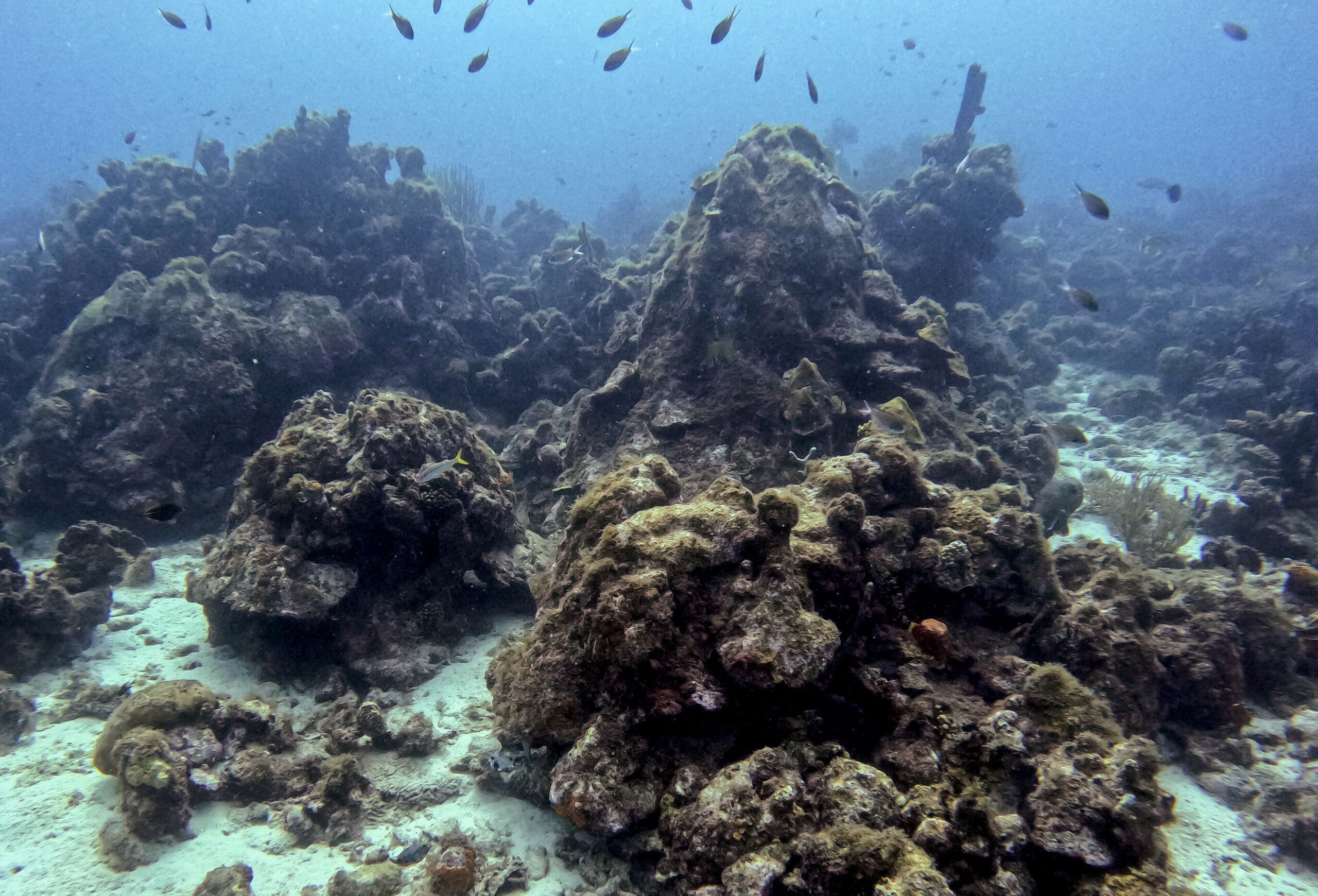$1.1M to boost Native Hawaiian sea cucumber spawning – University of Hawaii System

Report on Sustainable Aquaculture Development for Native Hawaiian Sea Cucumbers
1.0 Project Overview and Funding
The University of Hawaiʻi at Mānoa has received a grant of approximately $1.1 million from the National Oceanic and Atmospheric Administration (NOAA). The funding is allocated for a research project focused on developing reliable spawning techniques for the Native Hawaiian warty sea cucumber (Stichopus horrens). The primary objective is to remove significant barriers to the establishment of sustainable aquaculture in Hawaiʻi and to support the restoration of traditional Hawaiian fishponds (loko iʻa).
2.0 Alignment with Sustainable Development Goals (SDGs)
This initiative directly supports several United Nations Sustainable Development Goals (SDGs) through its focus on marine conservation, food security, and economic development.
- SDG 14: Life Below Water: The project directly confronts the issue of overfishing, which has severely depleted wild sea cucumber populations. By developing captive breeding methods, it promotes the sustainable use of marine resources and creates a pathway for conservation restocking efforts, thereby protecting marine biodiversity.
- SDG 2: Zero Hunger: By establishing dependable aquaculture methods, the initiative contributes to food security and promotes sustainable food production systems. It aims to create a new and reliable source of marine-based food.
- SDG 8: Decent Work and Economic Growth: The research is a critical step toward creating a new, sustainable aquaculture industry in Hawaiʻi. This has the potential to generate economic growth and create jobs by tapping into the nearly $1 billion global market for sea cucumbers.
- SDG 12: Responsible Consumption and Production: The project fosters sustainable production patterns by providing a viable, farmed alternative to harvesting wild sea cucumbers. This reduces pressure on threatened marine ecosystems and promotes responsible consumption.
- SDG 17: Partnerships for the Goals: This initiative is founded on a multi-stakeholder partnership that includes academic institutions (UH College of Tropical Agriculture and Human Resilience, Hawaiʻi Sea Grant), a government agency (NOAA), and local cultural and industry partners (Waikalua Loko Iʻa fishpond, Kauaʻi Sea Farms).
3.0 Economic and Environmental Context
Sea cucumbers represent a global market valued at nearly $1 billion, driven by demand for food and medicinal products. This high demand has led to widespread overfishing and the severe depletion of wild stocks globally. In Hawaiʻi, the primary obstacle to developing a commercial aquaculture sector for this species has been the absence of reliable breeding methodologies for local varieties. This project aims to resolve that bottleneck, fostering both economic opportunity and environmental stewardship.
4.0 Research Methodology and Collaboration
The project’s scientific approach is designed to translate foundational research into practical application for sustainable production and conservation.
- Research Focus: Led by Principal Investigator Andre P. Seale, the research will concentrate on establishing protocols to induce oocyte (egg) development and controlled spawning in captive specimens of Stichopus horrens.
- Scientific Foundation: This work builds on recent findings by the research team, published in General and Comparative Endocrinology, which identified a key protein that induces egg maturation in the warty sea cucumber. This discovery provides the scientific basis for the current project.
- Integrated Application: The project integrates university research and extension capabilities with industry and cultural partners to ensure that scientific advancements are rapidly developed into reliable methods for food production and conservation restocking.
Analysis of Sustainable Development Goals in the Article
1. Which SDGs are addressed or connected to the issues highlighted in the article?
-
SDG 2: Zero Hunger
The article connects to this goal by focusing on developing sustainable aquaculture for sea cucumbers, which are a food source. The project aims to translate research into “reliable food production methods,” contributing to food security.
-
SDG 9: Industry, Innovation and Infrastructure
This goal is addressed through the project’s core focus on scientific research and technological development. The article highlights the nearly “$1.1 million grant” to “unlock reliable spawning techniques” and “address key barriers” in aquaculture, which represents an investment in research and innovation to build a new, sustainable industry.
-
SDG 14: Life Below Water
This is the most central SDG in the article. The project directly addresses the conservation and sustainable use of marine resources. It aims to combat the effects of overfishing, which has “severely depleted” wild sea cucumber populations, by developing sustainable aquaculture. Furthermore, it supports the “restoration efforts” of traditional Hawaiian fishponds (loko iʻa), which are vital coastal ecosystems.
-
SDG 17: Partnerships for the Goals
The article explicitly details a multi-stakeholder partnership to achieve its objectives. It describes a collaboration between academic institutions (University of Hawaiʻi’s CTAHR and Sea Grant), a government agency providing funding (National Oceanic and Atmospheric Administration), and “cultural and industry partners” (Waikalua Loko Iʻa fishpond and Kauaʻi Sea Farms). This collaborative model is a key aspect of SDG 17.
2. What specific targets under those SDGs can be identified based on the article’s content?
-
SDG 2: Zero Hunger
- Target 2.4: By 2030, ensure sustainable food production systems and implement resilient agricultural practices. The project’s goal to develop “sustainable aquaculture” and “reliable food production methods” for sea cucumbers directly supports the creation of a sustainable food production system.
-
SDG 9: Industry, Innovation and Infrastructure
- Target 9.5: Enhance scientific research, upgrade the technological capabilities of industrial sectors…and encourage innovation. The project is a direct application of this target, using a significant grant to conduct scientific research (“focusing on protocols to induce egg development and spawning”) to innovate and overcome technological barriers in the aquaculture sector.
-
SDG 14: Life Below Water
- Target 14.2: By 2020, sustainably manage and protect marine and coastal ecosystems…and take action for their restoration. The project supports “traditional Hawaiian fishpond (loko iʻa) restoration efforts,” which are actions to restore coastal ecosystems.
- Target 14.4: By 2020, effectively regulate harvesting and end overfishing. By creating a reliable method for aquaculture, the project provides an alternative to harvesting wild sea cucumbers, which the article notes have been “severely depleted” by “overfishing.” This helps reduce pressure on wild stocks.
- Target 14.a: Increase scientific knowledge, develop research capacity and transfer marine technology. The project is centered on increasing scientific knowledge by researching spawning techniques for the warty sea cucumber, building upon foundational research already published. The goal is to develop and transfer this technology to industry partners.
-
SDG 17: Partnerships for the Goals
- Target 17.16: Enhance the global partnership for sustainable development, complemented by multi-stakeholder partnerships that mobilize and share knowledge, expertise, technology and financial resources. The article describes such a partnership, involving academia (UH), government (NOAA), and private/cultural sectors (Waikalua Loko Iʻa, Kauaʻi Sea Farms) to share knowledge and financial resources ($1.1 million grant) for a common goal.
3. Are there any indicators mentioned or implied in the article that can be used to measure progress towards the identified targets?
-
Indicators for SDG 9 and 14
- Development of reliable spawning protocols: The primary goal is to “unlock reliable spawning techniques” and develop “protocols to induce egg development and spawning in captivity.” The successful creation of these protocols is a direct indicator of progress.
- Research and development funding: The article explicitly mentions the project is funded by a “nearly $1.1 million grant,” which serves as an indicator for investment in scientific research (Target 9.5).
- Scientific publications: The article mentions that the current work builds on “foundational research by the team that was published in General and Comparative Endocrinology.” The number of future publications would be an indicator of increased scientific knowledge (Target 14.a).
-
Indicators for SDG 2 and 14
- Increase in aquaculture production: An implied indicator is the future establishment and growth of sea cucumber aquaculture in Hawaiʻi. The project aims to remove the “primary hurdle to commercial aquaculture,” so a subsequent increase in production would measure success.
- Restoration of fishponds (loko iʻa): The project’s contribution to restoration efforts can be measured by the successful restocking of sea cucumbers in these traditional fishponds, enhancing their ecological function and productivity.
-
Indicator for SDG 17
- Number of multi-stakeholder partnerships: The article identifies a partnership between at least four distinct entities (UH, NOAA, Waikalua Loko Iʻa, Kauaʻi Sea Farms). The existence and successful functioning of this collaboration is an indicator for Target 17.16.
4. Create a table with three columns titled ‘SDGs, Targets and Indicators” to present the findings from analyzing the article. In this table, list the Sustainable Development Goals (SDGs), their corresponding targets, and the specific indicators identified in the article.
| SDGs | Targets | Indicators |
|---|---|---|
| SDG 2: Zero Hunger | 2.4: Ensure sustainable food production systems. | Establishment of reliable and sustainable sea cucumber aquaculture production methods. |
| SDG 9: Industry, Innovation and Infrastructure | 9.5: Enhance scientific research and encourage innovation. | Amount of research funding ($1.1 million grant); Development of new spawning protocols. |
| SDG 14: Life Below Water | 14.2: Sustainably manage and protect marine and coastal ecosystems and take action for their restoration. | Contribution to the restoration of traditional Hawaiian fishponds (loko iʻa). |
| 14.4: End overfishing. | Reduced pressure on wild sea cucumber stocks through the development of an aquaculture alternative. | |
| 14.a: Increase scientific knowledge and develop research capacity. | Publication of research findings; Successful development of spawning techniques for stichopus horrens. | |
| SDG 17: Partnerships for the Goals | 17.16: Enhance multi-stakeholder partnerships. | Number and type of partners involved (academia, government, cultural, and industry partners). |
Source: hawaii.edu
What is Your Reaction?
 Like
0
Like
0
 Dislike
0
Dislike
0
 Love
0
Love
0
 Funny
0
Funny
0
 Angry
0
Angry
0
 Sad
0
Sad
0
 Wow
0
Wow
0
















































:focal(1500,1000)/https://media.globalcitizen.org/a6/9a/a69a4720-d8a1-4715-b596-18738d03c05c/rotary_polio_hero_image.jpg?#)







/countries/sri-lanka/photo-credit---dmc-sri-lanka.tmb-1200v.jpg?sfvrsn=dc298bcc_1#)


















